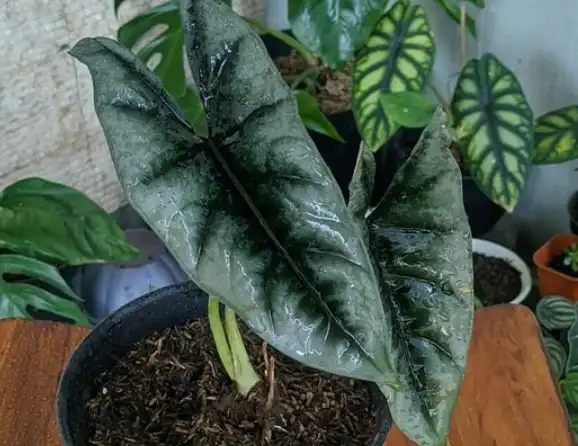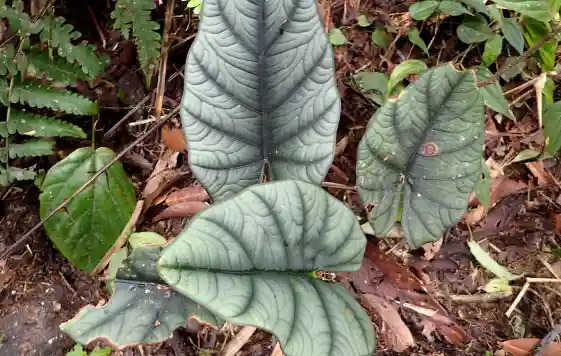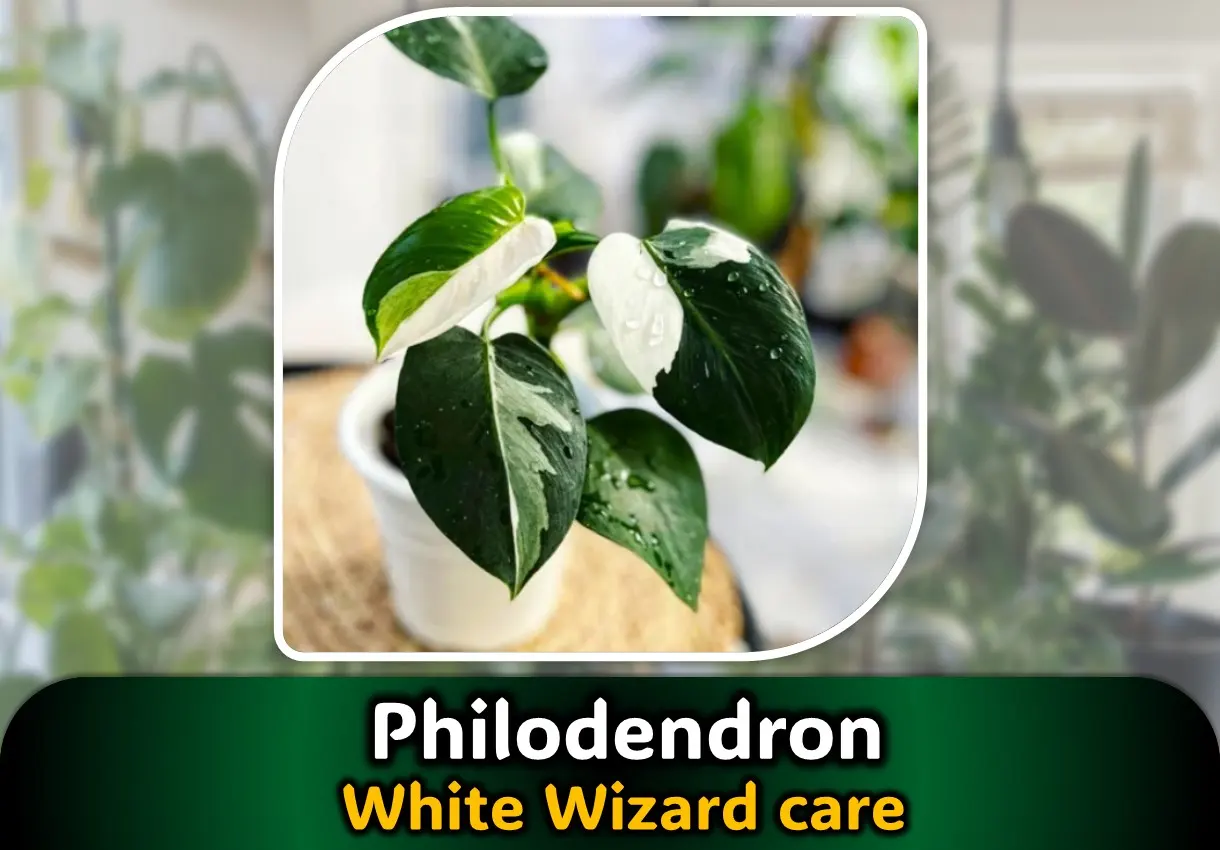Alocasia reversa care, propagation, leaves problem [All you need to know]
Recently, I brought an alocasia reversa plant for my garden. I was so excited about their different outlook. But gradually, I understood that, despite being hardy, they also need some specific materials appropriately.
Bright and indirect light, 65°F to 86°F temperature, 60% humidity, sandy loam soil and regular watering are their basic needs. You can multiply them by dividing rhizomes and planting them. Apart from those, overwatering, underwatering, pest attack, over-fertilization may cause yellowing, browning or curly leaves.
So stay tuned with me to know the different aspects of alocasia reversa.

Overview
| Scientific name | Alocasia reversa |
| Other names | African mask |
| Family | Araceae |
| Origin | Borneo, an island in Southern Asia |
| Plant height | 2-6 ft |
| Plant type | Tropical perennial plant |
| Leaf | Greyish green leaf surface with dark green veins |
| Stem | Tuberous stem |
| Sunlight | Bright indirect light |
| Watering | Once a week |
| Humidity | More than 60% |
| Temperature | 65°F to 85°F |
Where to buy alocasia reversa?
Are you finding a reliable website to order an alocasia reversa plant? Then search on the website. Though you may love to buy plants from the nursery by direct checking, you can order this without any worries in case of not finding the plant in your local nursery.
Alocasia reversa plant care guide
After ordering an alocasia reversa plant, you have to ensure proper care to maintain the reversing color contrast of the plant. So, follow the mentioned rules to know how to care for an alocasia reversa plant.
Alocasia reversa light requirement
At the initiation of our caring list, I would like to describe the light requirement. Alocasia reversa can grow well in sunlight. Shady conditions increase pest attacks. So place your plant in a place where it can get the appropriate intensity of indirect bright sunlight.
Watering guide for alocasia reversa plant
Next, the factor is the watering guide. Use a water sprinkler, hose, or pipe, or watering can to water your plant once a week. Don’t water much. Otherwise, the root system may be damaged. Water requirements will be higher in summer than in winter.
The best soil for alocasia reversa
Soil consisting of potassium, nitrogen and phosphorus is better for alocasia reversa plants. The mixture of soil, cocopeat, perlite and sphagnum moss can be the best soil medium for reversa plants. Place the sandy portion on the lower surface so that water can be drained out.
Temperature and humidity for alocasia reversa
The best temperature for alocasia reversa is 65°F to 85°F. Food processing, other metabolic activities, respiration and all sorts of physiological processes can run better at this temperature. To facilitate this factor more, try to provide high humidity to your plant by using a humidifier.
The best fertilizer for alocasia reversa plant
Lastly, I want to end the caring guides by suggesting fertilizers. If you want to know about fertilizer type, I will suggest you take a liquid fertilizer like rather than a solid one. Such fertilizers can be easily released into the soil. Use it once in summer and once in spring.
Alocasia reversa plant propagation
One more way to get a new reversa plant is propagation. You can take a propagating material of reversa from your friends or neighbors and grow a new plant. So follow the procedures mentioned here to complete the process.
- Healthy mother plant
The plant from which you are taking the material should be free from any disease or health issues.

- Dividing the rhizome
After selecting the plant, clean the soil from the root zone and cut the rhizome into small parts.

- Planting
Place each plant in new pots and take care of them.

How to repot alocasia reversa plant
Repotting an alocasia reversa plant won’t be bothersome and harmful to your plant if you can manage it technically. After uprooting the plant from the old pot, place it in the new soil mixture and make sure you haven’t transferred any germ from the environment or previous pot.
Why are my alocasia reversa leaves turning brown?
Alocasia reversa plants particularly may turn brown due to sunlight issues and overwatering. When too much sunlight falls on them, the chlorophyll pigments get destroyed and the leaf looks burnt with fire. Overwatering also causes browning for their root rot problem.
Why are my alocasia reversa curling?
Alocasia reversa plants may curl because of insect attack and underwatering. It is not too easy to maintain the insect population specially mealybug in this plant. They suck the cell sap and make the leaves shrunken. Underwatering also makes the twisting of leaves.
Why are my alocasia reversa plants dying?
Alocasia reversa plants can die due to multiple reasons. Such as, if you see powdery substances or holes in the leaves, you can get sure that your plant is dying due to a pest attack. Again, underwatering, root bound problems, humidity stress and temperature problems can also be the causes of alocasia reversa dying.
Alocasia reversa vs alocasia clypeolata plant
Are you getting the similarities between alocasia reversa and alocasia clypeolata in their grayish-green surface? The leaves’ shape and size are almost the same. But the difference comes with the variation in venation. The clypeolata veins are purple and the reversa shows broader dark green veins.

Alocasia reversa vs alocasia reginae plant
The next one is alocasia reginae. These plant leaves are smooth like a reversa plant. The vein color is also dark green in both of the planta. But the dark green color is spread in the recersa plant which is just like lines in the reginae plant.

Are alocasia reversa fast growers?
Yes. Alocasia reversa is a fast-growing plant when it is placed outside. It can reach up to 6 feet. But the growth is lower indoors. Still, you can facilitate growth by providing the requirements properly.
Can alocasia reversa withstand frost?
Alocasia reversa is not a cold-tolerant plant. The system gets frozen inside. That’s why I try to keep them in a warm place during frost. You should also follow the same procedure.
Final thoughts
No more words to say about this plant in my present article. This plant is gorgeous in its specific way. If you want to keep them enchanting, you have to follow all the guides about alocasia reversa.
Again, you can easily differentiate reversa from its nearby plants. Apart from that, you may nurture the plant with some extra facilities. So applying this knowledge, you may keep your alocasia reversa plant healthy and glossy.






